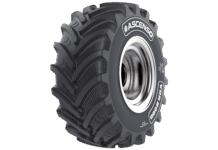In the face of unpredictable changes in weather conditions and rainfall patterns, it is evident that the age-old process of agriculture is no longer sufficient to meet the demands of the digital era. Rising temperatures and weather extremes pose significant threats to our food system, making it crucial to explore new approaches that enhance predictability and enable farmers to adapt to changing environmental conditions. The integration of data-driven tools, artificial intelligence (AI), machine learning algorithms, and technology in agriculture has the potential to revolutionize the industry, providing more precise information and empowering farmers to make informed decisions.
One of the key aspects of improving predictability in agriculture is harnessing the power of data. With access to comprehensive datasets on weather patterns, soil conditions, and crop growth, farmers can gain valuable insights that enable them to optimize their farming practices. By analyzing historical data and utilizing advanced algorithms, data-driven tools can provide accurate predictions and forecasts, guiding farmers in their decision-making processes. These tools take into account various factors, such as temperature, precipitation, and sunlight, to help farmers determine the optimal planting times, irrigation schedules, and fertilization methods.
Artificial intelligence and machine learning algorithms play a vital role in enhancing the predictability of agriculture. By analyzing vast amounts of data, AI algorithms can identify patterns and correlations that might not be apparent to human observation. This enables farmers to make more informed decisions and adapt their practices accordingly. For instance, AI algorithms can detect anomalies in weather patterns and provide early warnings for potential crop diseases or pest outbreaks. This proactive approach allows farmers to take preventive measures, optimizing the use of pesticides and minimizing their environmental impact.
Technology also plays a crucial role in comparing climatic and agronomic factors to improve agricultural production and resource allocation. By utilizing sensor technologies and remote sensing techniques, farmers can gather real-time data on soil moisture levels, nutrient content, and crop health. This information helps them make accurate assessments of resource requirements and make precise adjustments, such as adjusting irrigation schedules or applying fertilizers at the right time and in the right quantities. By optimizing resource allocation, farmers can achieve higher yields and reduce waste, ultimately leading to a more sustainable and efficient agricultural system.
Predicting and managing crop diseases is another area where technology can significantly contribute to predictability in agriculture. By monitoring various environmental factors and using machine learning algorithms, farmers can detect early signs of disease outbreaks and take appropriate action to prevent their spread. This proactive approach not only reduces crop losses but also minimizes the need for excessive pesticide use. By optimizing the use of pesticides, farmers can protect their crops while reducing the environmental impact associated with these chemicals.
Understanding and addressing environmental challenges is also a crucial aspect of achieving predictability in agriculture. By adopting regenerative agricultural practices, farmers can mitigate the effects of climate change, enhance soil health, and improve long-term sustainability. Regenerative agriculture focuses on building resilient ecosystems that can withstand environmental stresses and disruptions. It promotes techniques such as cover cropping, crop rotation, and conservation tillage, which contribute to soil fertility, carbon sequestration, and water conservation. By integrating environmental considerations into their practices, farmers can minimize risks and ensure the long-term viability of their operations.
Farm analytics is another valuable tool for navigating shifts in environmental conditions. By collecting and analyzing data from various sources, such as weather stations, soil sensors, and satellite imagery, farmers can gain a comprehensive understanding of their farm’s performance and make evidence-based decisions. Farm analytics can identify trends, patterns, and potential risks, allowing farmers to take proactive measures to mitigate the impact of changing conditions. This information can guide resource management decisions, such as adjusting planting schedules, optimizing irrigation, or diversifying crops, to adapt to evolving environmental challenges.
Furthermore, technology can be utilized to track the harvest and post-harvest inventory, enhancing efficiency and reducing waste. By implementing digital systems and integrating technologies such as barcodes, RFID tags, and cloud-based databases, farmers can accurately track their produce from the field to the market. This real-time visibility enables farmers to optimize logistics, manage inventory effectively, and reduce losses due to spoilage or mishandling.
Prioritizing the predictability of agriculture through the integration of data-driven tools, artificial intelligence, machine learning algorithms, and technology is crucial in overcoming the challenges posed by unpredictable weather conditions and climate change. By leveraging these innovative solutions, farmers can make informed decisions, optimize resource allocation, mitigate risks, and enhance overall efficiency. Embracing technology in agriculture not only ensures the resilience and sustainability of our food system but also empowers farmers to navigate the complexities of the digital era and thrive in an ever-changing environment.
By Mr. Santosh Shinde, Co-Founder & COO – FarmERP










[…] Source : FarmersReviewAfrica […]
Comments are closed.